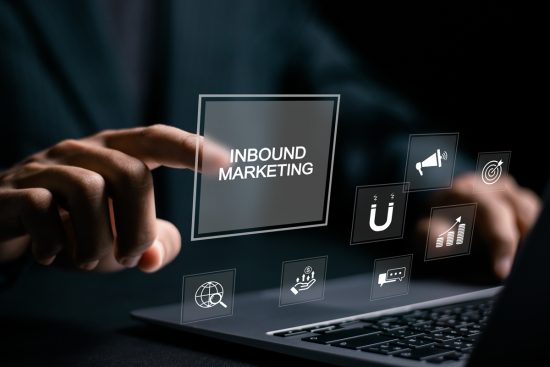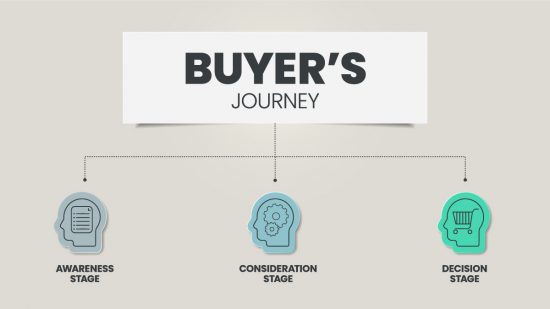Did you know that 90% of B2B customers start their buying process with an online search? This shows how important it is to have a strong online presence to engage potential customers early in their decision-making process. In the B2B sector, the buying journey is often long and complicated. Traditional marketing methods such as cold calling or direct mail alone are not enough to tackle this complexity. Instead, focusing on creating valuable content that meets the needs of your target audience can make a big difference. Inbound marketing helps businesses attract customers naturally, build trust and nurture lasting relationships.

What is inbound marketing?
Inbound marketing is a way to “attract loyal customers to your business by aligning with your target audience’s needs,” as the company HubSpot defines it. It’s about creating valuable content that speaks directly to your target audience. The goal is to engage and grow your customer base by offering helpful information rather than using pushy sales tactics.
To get started with inbound marketing, you need to know who your customers are and what challenges they face at different stages of their buying journey. When you understand your customers’ needs, you can create content that helps them solve problems and makes their lives easier. With this approach, customers will find you instead of you chasing after them.
The buyer’s journey

The buyer’s journey is the process that potential customers go through before making a purchase. It consists of three main stages: awareness, consideration, and decision.
In the awareness stage, buyers recognise that they have a problem or need and begin to search for information to understand and better formulate their problem. In the consideration stage, they have a clear definition of the problem and are exploring different ways to solve it. Finally, in the decision stage, buyers have decided on a solution and are choosing a specific product or service that best meets their needs. They are ready to make a purchase.
Your job is to give your potential customers the information they need at each stage and support them throughout the process.
Attract, engage and delight
The inbound methodology helps you connect with (potential) customers at each stage of the buyer’s journey. First, attract visitors to your website by creating content that addresses their everyday challenges and needs. This could be blog posts, videos, podcasts, webinars, infographics, social media posts, etc.
Then engage your visitors by offering them more detailed information as they search for specific solutions to their problems. You can offer e-books, case studies, reports and other types of high-value content – in exchange for their email address. This way, you can convert visitors into leads that you can nurture further down the line.
The third stage of the inbound methodology is all about delighting your customers. Make sure they have a positive experience with your products and services. Good customer service is key; your team should act as knowledgeable advisors that customers can rely on for support and guidance. Good relationships turn strangers into customers and customers into promoters of your brand.
Benefits of Inbound Marketing
Inbound marketing helps build trust and relationships with potential customers by providing valuable information that addresses their problems. This approach leads to more loyal customers and better long-term results. By creating and sharing quality content on various platforms, B2B companies can increase their brand visibility and establish themselves as industry leaders.
Inbound marketing helps attract and convert leads who are actively seeking information relevant to their needs, increasing the likelihood that they will be interested in the company’s products or services. Over time, this strategy not only increases brand awareness, but also strengthens the company’s reputation as a trusted authority in the industry.
